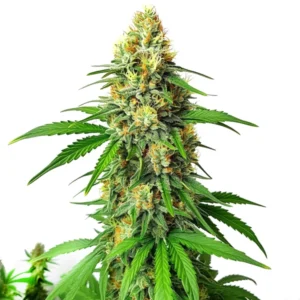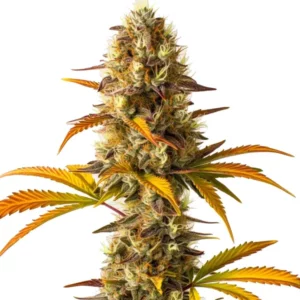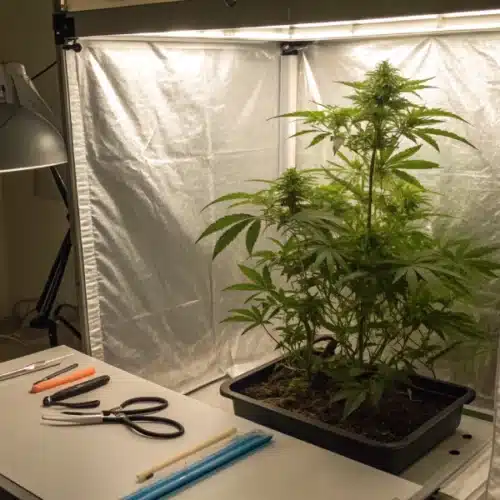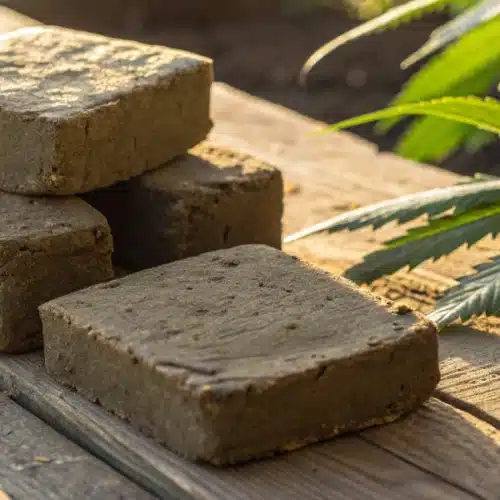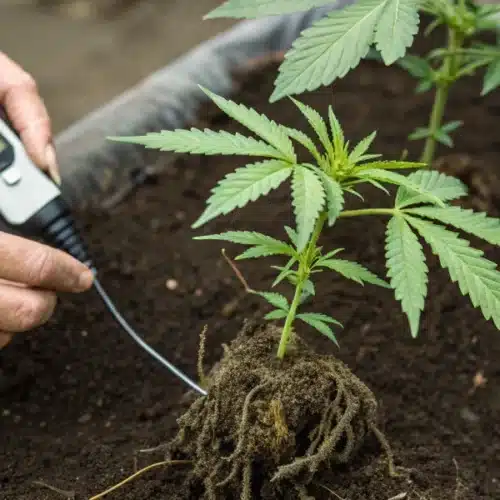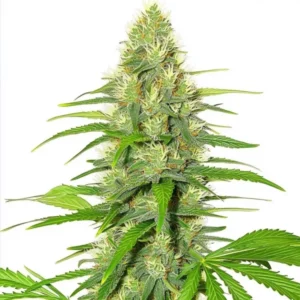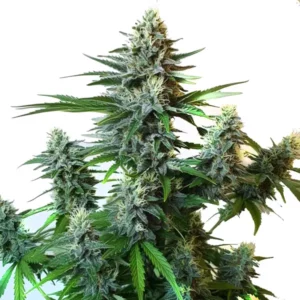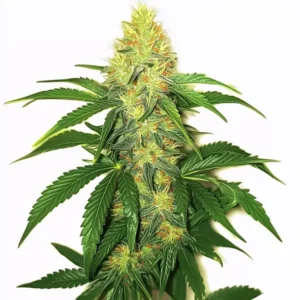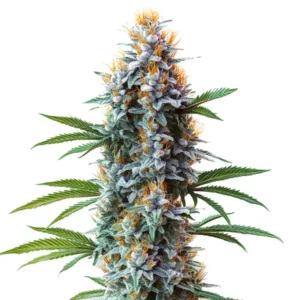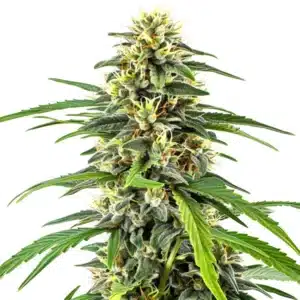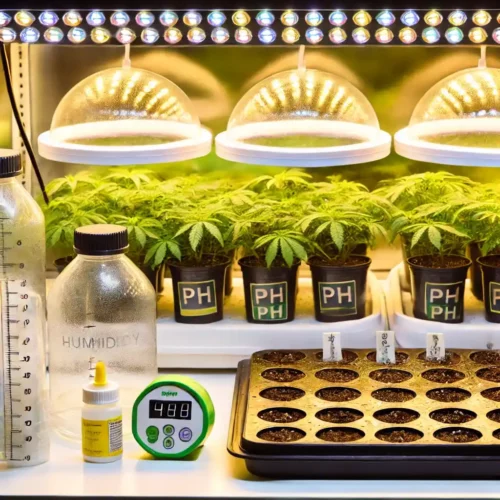Marijuana Clones
Cannabis growers are turning to cloning as a reliable method to cultivate plants with consistent genetics. But what is a marijuana clone exactly, and why is it such a game-changer? A marijuana clone is essentially a cutting taken from a “mother” cannabis plant. This clone, when properly cultivated, develops roots and grows into a new plant that’s genetically identical to its mother. This technique allows growers to replicate desired traits, ensuring every clone has the same potency, flavor, and growth characteristics as the original plant.
Unlike seeds, which may carry slight genetic variations, clones offer an identical copy of the mother plant. This consistency helps growers cultivate with confidence, knowing each plant will perform similarly. By mastering what a marijuana clone is and how it can improve your grow operation, you open the door to a world of possibilities, whether you’re cultivating for personal enjoyment or commercial goals.
Definition and Basics of Cannabis Cloning
Cloning cannabis involves taking a small stem cutting from a mature, healthy mother plant. This cutting contains the genetic blueprint of the mother plant, which includes everything from growth patterns to cannabinoid content. With the right conditions, these cuttings develop roots and become independent plants, growing to full maturity with the same traits as the mother.
The process requires minimal equipment, usually just a clean blade, rooting hormone, and a stable growing medium like soil or rockwool. For many growers, the ability to replicate specific cannabis plants is invaluable, allowing them to reproduce plants with high THC content, unique terpene profiles, or even specific growth patterns that make them easier to manage.
How Clones Differ from Seed-Grown Plants
While seeds bring the excitement of new genetic combinations, clones provide predictability. When you plant a cannabis seed, you may notice slight variations in growth rate, leaf shape, or even potency among the plants. This is due to genetic diversity, which occurs naturally in seed propagation. However, clones eliminate this variability by creating genetically identical plants.
For growers looking to maintain certain characteristics, such as a specific aroma or potency, cloning becomes the preferred choice. Unlike seed-grown plants, clones mature faster because they bypass the germination phase, moving straight into vegetative growth. This speed advantage alone can save weeks in a cultivation cycle, making cloning especially appealing for commercial operations aiming for regular harvests.
Promos & Deals
Benefits of Growing Marijuana Clones
Planting marijuana clones brings several unique benefits. From faster growth to predictable results, clones help growers achieve their cultivation goals more efficiently. Understanding these advantages is key to harnessing the full potential of cannabis cloning.
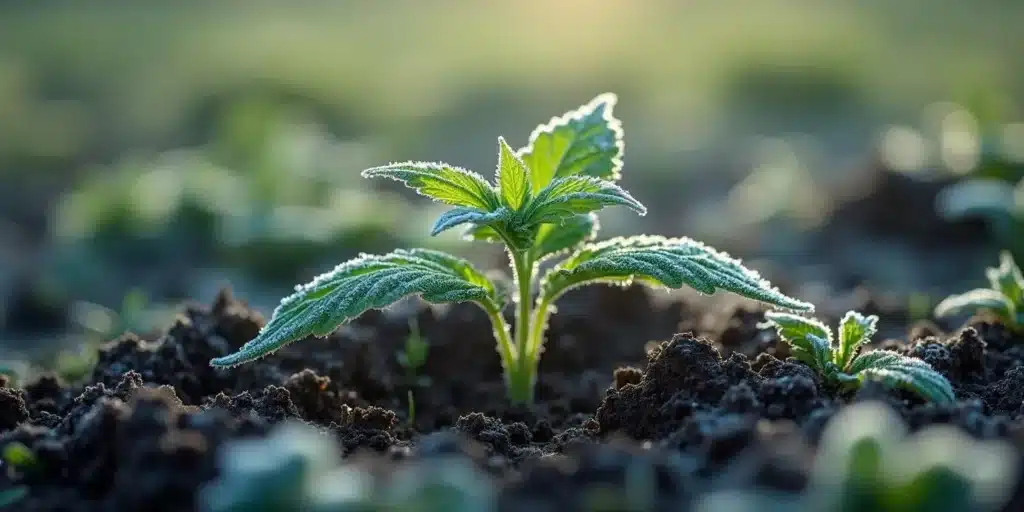
Faster Growth and Predictable Results
One of the most immediate benefits of using clones is the shortened grow cycle. Because clones skip the seedling stage, they start in the vegetative phase and develop roots quickly. This speeds up the entire grow process, helping growers move toward harvest sooner than with seed-grown plants. For commercial cultivators, this means a quicker turnover, leading to increased yields within the same timeframe.
Moreover, cloning ensures uniformity across your grow space. Since each clone shares the same genetics, you can expect consistent results in terms of height, flowering time, and potency. This predictability is especially important in controlled environments where maximizing space and resources is critical.
Preserving Desired Strain Traits in Clones
Cannabis enthusiasts often search for strains with specific effects, flavors, or medicinal properties. With marijuana clones, growers can preserve these desirable traits and reproduce them repeatedly. Once you find a plant with your ideal THC level, terpene profile, or growth habit, cloning allows you to recreate that plant exactly. This control over genetics is especially beneficial for those cultivating high-quality cannabis for medical use, as it ensures consistency in every harvest.
When you’re growing marijuana clones, you’re not gambling with genetic variation. Instead, you’re able to reproduce a plant that has already proven itself. This reliability removes much of the guesswork, allowing you to enjoy the same results time after time, whether you’re a recreational user, a medical patient, or a commercial grower.
How Marijuana Clones Are Created
Creating marijuana clones might sound complex, but it’s a straightforward process that can be mastered with some practice and the right conditions. Each step in the cloning process is designed to give the cutting the best chance to root and thrive. By following a precise approach, you can ensure successful results when growing your clones.
Key Steps in the Cloning Process
The first step in creating a marijuana clone is selecting a healthy “mother” plant with traits you want to replicate. Cut a 4-6 inch stem from the lower branches of the mother plant, making sure to use a sterile, sharp blade to avoid damaging the plant tissue. After making the cut, dip the stem in a rooting hormone to encourage root development, and then place it in your growing medium.
Choose a medium like rockwool, coco coir, or soil, depending on your preference. Rockwool is highly popular because it retains moisture well and is easy to manage. Once the cutting is in place, ensure it’s exposed to indirect light and maintains a high-humidity environment, which aids in root formation. The use of a humidity dome is recommended to keep moisture levels stable, allowing the clone to draw in water through its leaves as it begins rooting.
Ideal Conditions for Successful Clone Cutting
Providing the right conditions is critical to rooting success. Clones require a warm, humid environment with temperatures around 70-75°F (21-24°C) and humidity levels between 70-80%. Using a heat mat can be helpful, as it gently warms the growing medium, promoting faster root growth. High humidity is essential at this stage since clones rely on moisture absorbed through their leaves until roots are established.
Lighting should be low-intensity to prevent stress. LED or fluorescent lights set to 18 hours on and 6 hours off encourage gentle, steady growth. Ensuring these optimal conditions boosts rooting success rates and helps your clones transition into the next phase of growth with ease.
Marijuana Clones vs. Mother Plants
Understanding the relationship between clones and mother plants is fundamental to successful cannabis cloning. While clones are derived from mother plants, these mother plants play a crucial role in ensuring the quality and health of every cutting taken. By caring for mother plants, growers can create an endless supply of clones with desired characteristics.
The Role of Mother Plants in Cloning
A mother plant serves as the genetic source for all your clones. Choosing a vigorous, healthy mother plant with traits you admire is essential, as every clone will replicate these exact characteristics. A well-maintained mother plant can produce dozens, if not hundreds, of clones over its lifetime, making it a valuable asset for growers looking to maintain strain consistency.
Mother plants must be kept in a perpetual vegetative state, achieved by maintaining an 18/6 light schedule (18 hours of light and 6 hours of darkness). This prevents flowering and keeps the plant in a constant state of growth, allowing you to take fresh cuttings whenever needed. Proper care of your mother plant, including regular pruning and nutrient adjustments, ensures it remains healthy and capable of producing high-quality clones.
How to Choose a Healthy Mother Plant for Clones
Selecting the right mother plant is crucial for successful cloning. Look for a plant that displays strong growth, robust branches, and a high resistance to pests and diseases. Plants with high cannabinoid content and terpene profiles that meet your preferences make ideal mothers, as every clone will carry these traits forward.
Mother plants benefit from specific nutrient regimens that support long-term health without triggering flowering. Avoid high levels of phosphorus, as it promotes flowering, and focus on nitrogen-rich nutrients that keep the mother plant in a vegetative state. Regularly inspect the mother plant for signs of stress, nutrient deficiency, or pests to maintain its condition and ensure it continues producing healthy clones.
Uses of Marijuana Clones
Cannabis clones have a wide range of uses, making them valuable for both commercial and personal cultivation. Whether you’re growing on a large scale or for personal use, clones offer distinct advantages that streamline the cultivation process and yield reliable results.
Commercial Growing and Consistency
In commercial cannabis cultivation, consistency is key. Consumers expect a reliable product, which can be difficult to achieve with seeds due to genetic variations. Clones eliminate this uncertainty, allowing commercial growers to produce uniform plants with predictable growth patterns, cannabinoid content, and terpene profiles. This level of consistency is essential in a competitive market where quality and reliability drive success.
Cloning also saves time in commercial operations, allowing for shorter grow cycles and faster harvests. With the ability to take cuttings from the same mother plant, growers can maintain a steady supply of clones that mature at the same rate. This predictability helps with efficient planning and resource allocation, which is vital in large-scale grows.
Personal Cultivation with Reliable Genetics
For personal growers, marijuana clones offer a straightforward way to cultivate specific strains without the uncertainty of seeds. Once you find a strain that meets your preferences, cloning ensures that you can continue to grow the same quality product without starting from scratch each time. Cloning allows you to enjoy the effects, flavors, and aromas you love in a reliable, reproducible way.
Clones are particularly beneficial for home growers with limited space or resources. By avoiding the germination phase, clones save time and reduce the likelihood of errors that can occur when starting from seeds. Personal cultivators can optimize their small-scale operations by focusing on the plants they know and enjoy, producing consistent, high-quality results every cycle.

Cloning Cannabis for Maximum Yield and Quality
Cloning cannabis offers growers a way to maximize both yield and quality by preserving desired traits and creating genetically identical plants. This ability is especially valuable for strains that produce high yields or have unique cannabinoid profiles. For growers, cloning provides control over each plant’s output, ensuring that each crop meets expectations without the unpredictability often associated with seed-grown plants.
Enhancing Yield Through Cloning Techniques
Cloning allows growers to focus on high-yielding plants, ensuring that each clone produced from a successful mother plant will offer similar results. When selecting mother plants specifically for yield, growers can perpetuate desirable growth patterns that encourage denser, more abundant buds. By continually cloning from high-yield mothers, the quality and quantity of each harvest are more predictable.
Certain pruning and training techniques can further enhance yield when applied to clones. Methods like topping or low-stress training (LST) allow light to reach lower branches, promoting even growth across the canopy. This approach, combined with the genetic reliability of clones, results in robust plants with maximized bud sites, ultimately leading to larger harvests.
Consistent Quality and Cannabinoid Profiles
For growers focused on quality, cloning offers a direct way to reproduce plants with specific cannabinoid and terpene profiles. Once a grower identifies a plant with high THC content, balanced CBD levels, or unique terpenes, cloning allows them to recreate this specific combination time and again. This consistency in quality is particularly advantageous for medical patients and recreational consumers seeking predictable effects from each plant.
Cannabis clones retain the mother plant’s cannabinoid ratios, which means that each clone from a high-quality plant will yield buds with similar potency and effects. This quality control is beneficial for commercial growers looking to establish brand consistency, as well as personal growers who rely on specific effects for medicinal purposes.
Troubleshooting Common Issues When Cloning Marijuana
Cloning marijuana, while reliable, does come with its own set of challenges. New growers or those unfamiliar with the process might encounter issues like slow rooting, wilting, or nutrient imbalances. Learning to troubleshoot these problems can help ensure that every clone grows successfully, leading to a healthy and productive plant.
Addressing Rooting Challenges
Rooting is one of the most critical stages in cloning and often where issues arise. Clones that struggle to develop roots may wilt, yellow, or fail to thrive. The primary reasons for rooting issues include low humidity, poor temperature control, and inadequate moisture levels in the medium. Maintaining a high-humidity environment (70-80%) and consistent temperatures (70-75°F) is key to encouraging root formation.
Using rooting hormones can also support root growth by promoting cell division at the cut site. When issues persist, check that the medium is not too wet, as excessive moisture can suffocate developing roots. If clones continue to struggle, repositioning them to improve airflow and reduce excess moisture can often stimulate root growth.
Preventing Nutrient Imbalances in Clones
Clones are highly sensitive to nutrient levels, especially in the early stages. Excess nutrients can lead to nutrient burn, while deficiencies can stunt growth. During the rooting stage, keep nutrient levels minimal, focusing instead on water and light misting to keep clones hydrated. Once roots establish, gradually introduce a balanced nutrient solution, monitoring for any signs of imbalance like yellowing or browning of leaves.
Adjusting pH levels is also essential, as nutrient availability depends on proper pH balance. For hydroponic setups, aim for a pH of 5.5-6.5, while soil-grown clones typically thrive at a pH of 6.0-7.0. Regular pH testing and careful nutrient management are key to maintaining a healthy start for clones and preventing growth setbacks.
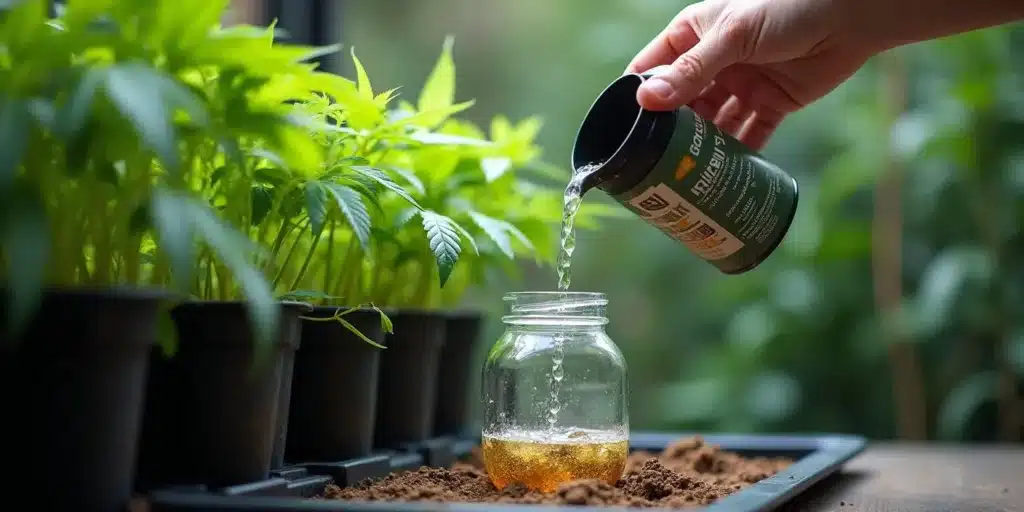
The Economics of Using Marijuana Clones
Cloning cannabis can offer financial benefits to both commercial growers and personal cultivators. By using clones, growers bypass the cost of purchasing new seeds for each grow cycle, which can become expensive, especially for high-demand or rare strains. Cloning provides an affordable, renewable source of plants that share consistent characteristics.
Reducing Costs with Cloning
For commercial growers, cloning eliminates the need for continual seed purchases, which can add up over multiple grow cycles. With clones, each plant can produce genetically identical offspring, allowing growers to maintain a steady supply of plants without ongoing costs. Cloning also reduces the labor and time required for seed germination, allowing for faster grow cycles and quicker turnover.
Personal growers, particularly those who prefer specific strains, benefit from cost savings as well. Rather than buying seeds for every grow, they can rely on clones to replicate their preferred plants, ultimately making cloning an economical option for long-term cultivation.
Predictable Revenue from Consistent Clones
Commercial operations benefit from the predictability of clones, which translates to reliable revenue. Clones offer uniformity in growth rates, flowering times, and final yields, enabling accurate planning and forecasting for each harvest. This consistency ensures that customers receive the same quality product, building brand trust and increasing customer loyalty.
For cultivators supplying medical cannabis, clones provide a dependable source of plants with known cannabinoid profiles. This reliability is essential for patients who require specific effects for symptom relief. By cloning high-CBD or THC-rich strains, medical growers can consistently deliver therapeutic products, creating an invaluable resource for patients and a stable revenue stream for businesses.
Environmental Impact and Sustainability of Cloning
Cloning cannabis is also an environmentally friendly approach to cultivation. By using clones, growers can reduce their reliance on seeds, which require resources to produce. Cloning allows for sustainable growth cycles that make efficient use of resources, making it an attractive choice for eco-conscious growers.
Reducing Waste and Resource Consumption
Cloning reduces the need for new seeds, which can have a substantial impact on resource usage. Each clone bypasses the germination phase, requiring fewer resources, including water and nutrients, compared to seed propagation. Additionally, cloning extends the life of desirable plants, reducing the need for multiple mother plants and allowing growers to sustain production with minimal plant material.
Cloning also minimizes the amount of genetic variability, allowing for uniform cultivation practices that conserve resources. This consistency allows growers to optimize watering, lighting, and nutrient schedules, which can reduce waste and make cultivation more resource-efficient.
Supporting Sustainable Cannabis Cultivation Practices
For those aiming to grow cannabis with minimal environmental impact, cloning offers a sustainable solution. By continuously using healthy mother plants, growers avoid unnecessary waste and contribute to a circular cultivation process. This closed-loop approach helps minimize the ecological footprint of cannabis production, making it an ideal choice for responsible growers.
In addition, by eliminating the need for new seeds, cloning promotes a sustainable growing cycle that is less resource-intensive. With careful planning, clones provide a renewable and consistent source of cannabis, allowing growers to maintain high standards without compromising on environmental responsibility.

